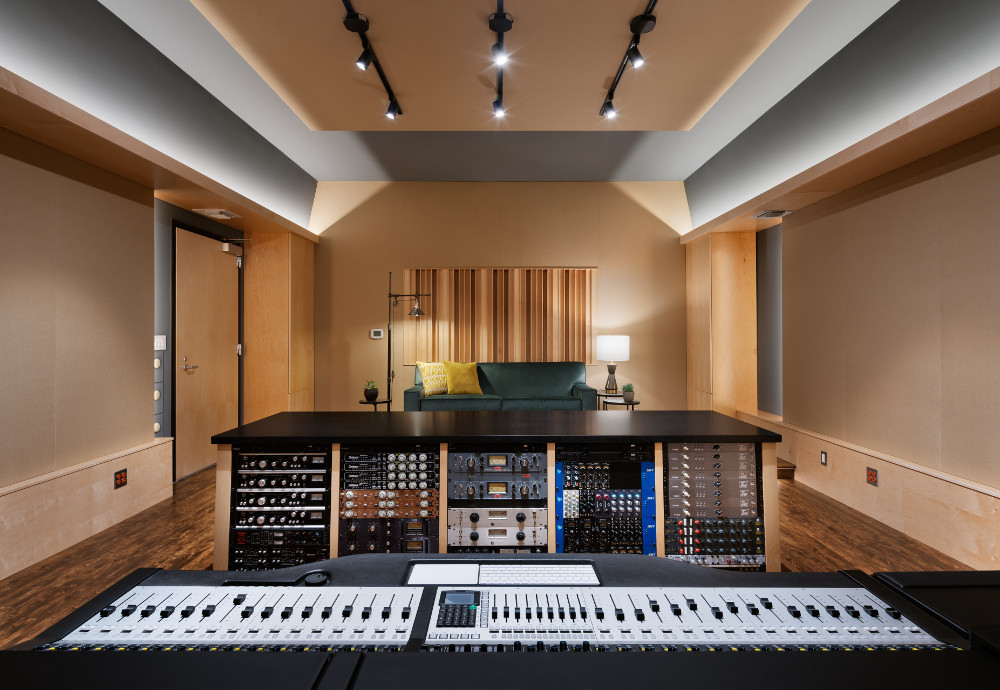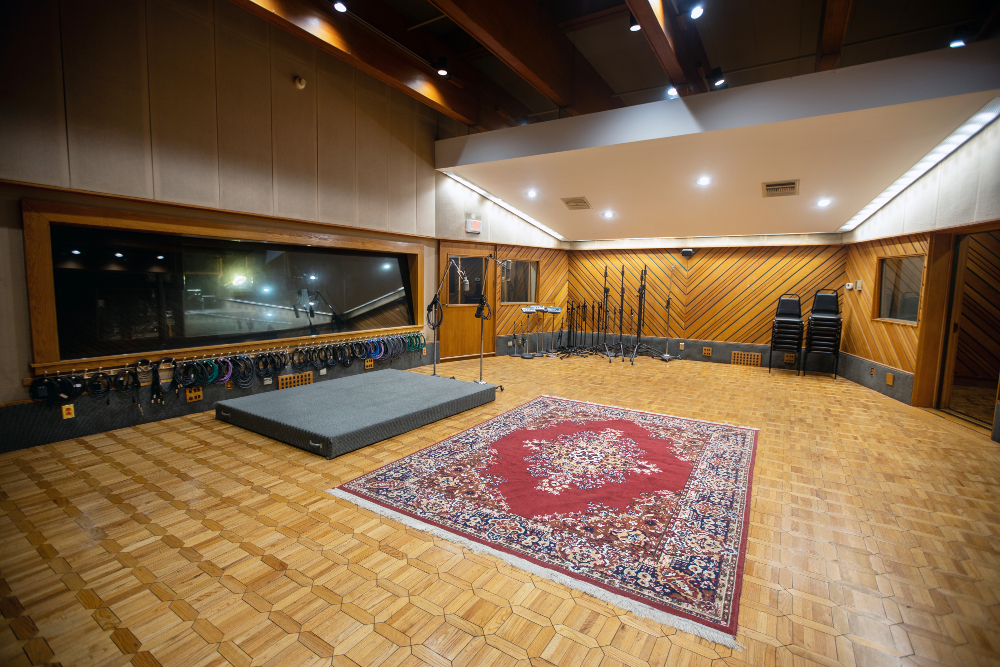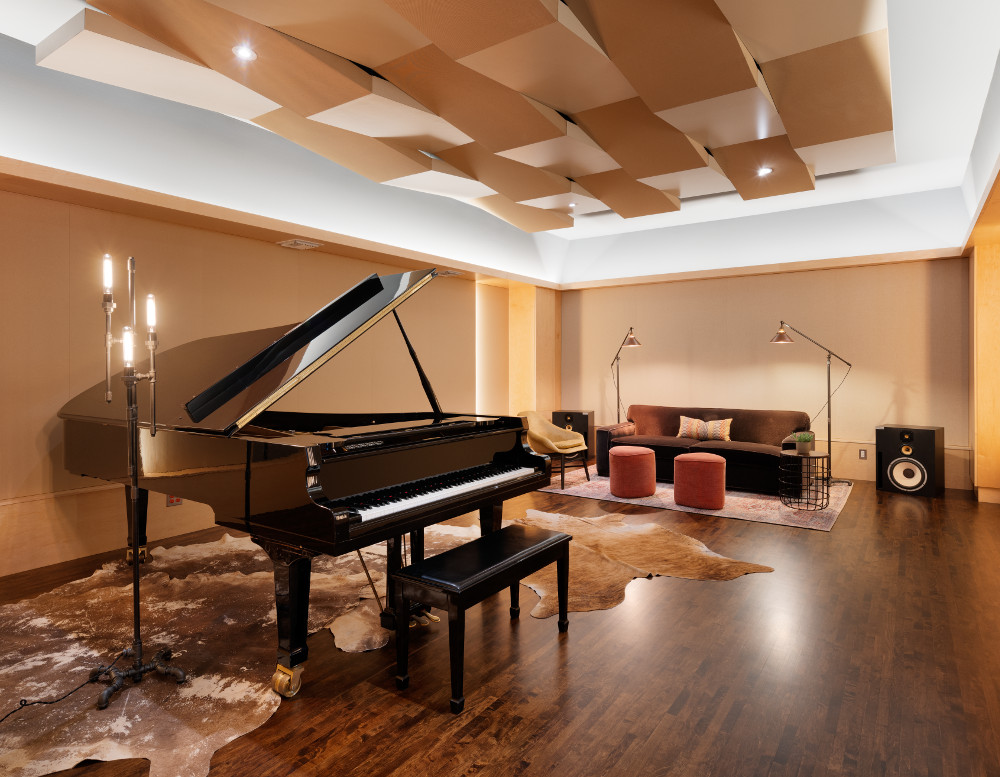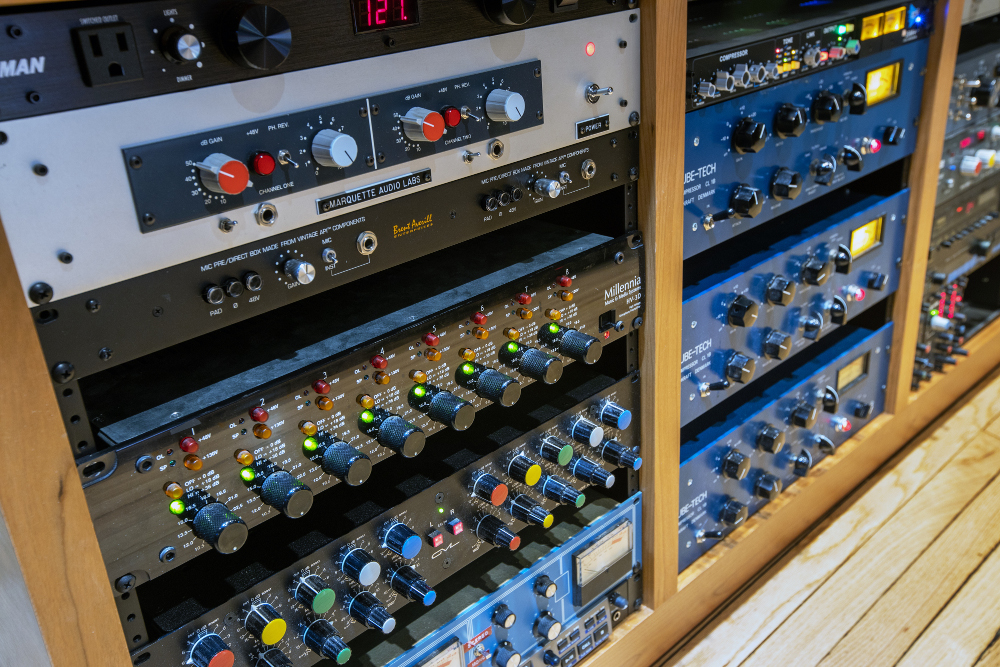Shared Heritage: A Production Music Studio Pair Powers Up Los Angeles and Nashville
There was already plenty to connect Los Angeles and Nashville. Now two new studios bridge the major music meccas.
These audio facilities come courtesy of Warner Chappell Production Music, which recently opened up SkyLight Studios in LA and Sandtrack Sound eastward in Music City. The studios add to WCPM’s music-for-picture offerings which currently represent 135,000+ tracks and 120+ catalogs. They release over 350 new albums each year – almost one a day.
The uses for WCPM’s tracks are varied and include television, film, sports, streaming, advertising, corporate, news, and more. Genres are equally wide-ranging, covering hip hop, pop, rock, country, classical, orchestral, modern underscore, jazz, trailer music, sound design/SFX, world repertoire and vintage archival.
Operating at such grand scales, it’s sensible that in-house facilities would service much of the custom music and sound production needs. As a part of the Warner Music Group family, WCPM had the resources for newly designed high-end studios, knowing they would achieve ROI and then some from their efforts.

WCPM’s Criterion Acoustics-designed SkyLight Studios in Los Angeles features a Neve Genesys, which pairs analog circuit design with digital control. (Photo Credit: Eric Staudenmaier Photography)
In Hollywood, SkyLight Studios is situated in a former mastering lab. Pro Tools combines with a Neve Genesys console, vintage microphones, and tape machines. Much of its gear comes from WCPM’s former Salt Lake City studio, LA East, with over 30 years’ worth of vintage mics and analog equipment. New gear was added from there based on staff specifications. There is a 9′ concert grand piano in the 500 square-foot tracking room.
Located near major LA studios and production companies, SkyLight provides custom music services, plus recording and mixing support, for the WCPM library. There is a seven-person staff including five-time GRAMMY-winning House Engineer Ryan Freeland. WCPM’s VP of Production, Scott Reinwand, was a long-term consultant prior to joining full-time in 2020, and helps oversee West Coast production. The pair report to Pat Weaver, WCPM’s Head of Production.
Over Nashville way, Sandtrack Sound is on Music Row. It occupies an 8,200+ square foot building which was originally known as Emerald Sound Studio and then Benchmark Sound. A 1981 creation of pioneering acoustic designer Tom Hidley, the space’s Gold and Platinum discography includes Johnny Cash, George Strait, Alabama, Brooks & Dunn, Foreigner, Bon Jovi, and Olivia Newton-John.
The largest of Sandtrack’s three studios is Studio A, which can hold 30+ musicians. Studio A and two additional control rooms saw substantial equipment upgrades. These include a custom hybrid Avid S6/Tonelux 1628 console, and microphone preamplifiers by Rupert Neve Designs. here. Aaron Gant, SVP of Production, oversees WCPM’s operations in Nashville, working alongside longtime House Engineer Mark Lonsway.

The sizable live room in Nashville’s Sandtrack can hold 30+ musicians. (Photo credit: Michael Tedesco, Tedesco Pictures)
According to Pat Weaver, WCPM’s studio needs have been continuously evolving.
“Making sure our music has high production value has always been our trademark,” she says. “We understand some broadcasters are accepting and using MP3 versions of music made entirely on a laptop, but our stance has always been to capture and retain the highest quality recordings possible, and we built our studio to support that.
“It makes a difference,” Weaver continues. “We’ve always used real musicians when it’s integral to the music, so having a studio at our disposal is essential. Changes are mostly occurring in faster turn-around times, more demo options and increased flexibility in deliverables such as stems, submix options, and cutdowns.”
In turn, these changes in the production music landscape guided studio design choices for SkyLight and Sandtrack. “Both studios were designed to utilize all the space simultaneously,” notes Weaver. “At SkyLight, we have writers’ rooms that have tie-lines connected to the tracking room. There is a mobile rack for visiting producers/composers who can write and record without interrupting any mixing going on in the control room.”
“Sandtrack Sound previously had extensive wiring throughout the entire building including audio tie-lines in every room,” Gant says. “We replaced all the equipment in each of the three control rooms and designed a new patch-bay in Studio A. In addition, we replaced the existing Cat-5 cables with Cat-6 throughout the entire building and added multiple patch points, so that in the future we’ll be able to record from the big room to any of the control rooms.
“The existing design was already great. We just refinished flooring and installed new carpet in the office spaces.”
Distinguishing Characteristics

The live room at Soundtrack sports a classic vibe. (Photo credit: Michael Tedesco, Tedesco Pictures)
The respective locations and musical communities each studio serves are different, as are each studio’s unique strengths. “Sandtrack Sound offers a much larger tracking room and can handle up to 30 or so players, whereas SkyLight can handle about 10,” says Weaver. “While Sandtrack is a much older studio and definitely has a sound and vibe, the LA location is sleek and modern with lots of natural light. It’s the best of both worlds.”
There are also many common threads between the two studios. “We use Pro Tools in all the rooms and have a compatible collection of plugins, outboard gear, and microphones,” Gant observes. “Projects recorded at one facility may be mixed at the other and, if needed, sessions can be opened in any room for mix changes or special requests. Both studios also house offices for production staff.”
Rooms with Benefits
With both SkyLight and Sandtrack being built out of pre-existing studios, each came with built-in vibe and acoustical properties. Already far along, these structures presented both design opportunities and challenges.
“For LA’s SkyLight Studios, the building was a former state-of-the-art mastering lab,” explains Weaver, “So we already had the floating floor, reinforced concrete walls, built-in troughs, soundproof doors, et cetera. We replaced the acoustical treatment to better serve recording versus mastering.”
Gant says, “Sandtrack Sound was purpose-built as a high-quality studio in the 80s, designed by Tom Hidley. Most famously known as Emerald Studios, you’ve heard the sound of this room on thousands of albums through the years from Willie Nelson, Bon Jovi, James Taylor, and Dolly Parton.
“Studio A isn’t a huge control room, like a lot of designs now, so instead of a couch in the back, we installed a producer desk and put some nice leather chairs on both sides of it. The room sounds great, and we added Bryston Amps on the mains—which were built and designed for the control room but hadn’t been fired up in 12 years—which sound surprisingly nice.”

SkyLight’s LA tracking room has a 9′ concert grand piano. (Photo Credit: Eric Staudenmaier Photography)
SkyLight’s patch bay was moved back to its original spot on the wall. This made it challenging to run some of the mic lines to and from the Neve Genesys hybrid console, and all the external mic pres, down through existing floor troughs.
“The compressors and a few other pieces are located behind the producer desk,” Gant says. “While the outlets and electrical needed some work, overall the studio is very well built. Famously, this studio has sand coming out of the walls in a few places and piles up in some corners. Thus our name: Sandtrack Sound.”
WCPM team partnered with acoustical designer David Kotch of Criterion Acoustics to redesign SkyLight Studios. “Criterion was great to work with, and the team is very familiar with the Warner Music family having been involved in many studio buildouts,” says Weaver. “Everything they do is top-notch from an acoustic standpoint and aesthetically, they transformed the space.”
“There were some unforeseen hiccups along the way, which they navigated with ingenuity. The result is a space that is both well-balanced acoustically and inspiring.”
Gear for Years
If the studios sound like a gear lover’s playground to you, we won’t disagree. In addition to the aforementioned Salt Lake City stash going to LA’s SkyLight, Nashville got many choice LA East pieces, plus moved choice equipment from its own previous location.
“When installing the new studios, we kept the best of our vintage and newer gear and parted ways with anything that didn’t align with our philosophy of making and recording the highest quality music available,” Gant says. “Sandtrack Sound Studio A was designed around the preferences and needs of house engineer Mark Lonsway. Overall, the philosophy was to have the best options available in the analog and digital domains, ease of recall, and maximum flexibility of the space.”
— David Weiss is an Editor for SonicScoop.com, and has been covering pro audio developments for over 20 years. He is also the co-author of the music industry’s leading textbook on synch licensing, “Music Supervision, 2nd Edition: The Complete Guide to Selecting Music for Movies, TV, Games & New Media.” Email: david@sonicscoop.com
Please note: When you buy products through links on this page, we may earn an affiliate commission.








[…] These audio facilities come courtesy of Warner Chappell Production Music, which recently opened up SkyLight Studios in LA and Sandtrack Sound eastward in Music City. The studios add to WCPM’s music-for-picture Read more… […]